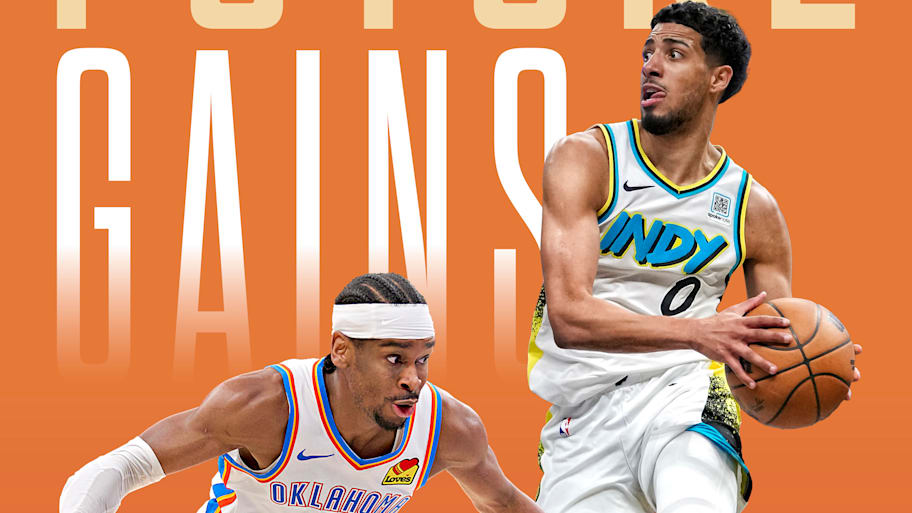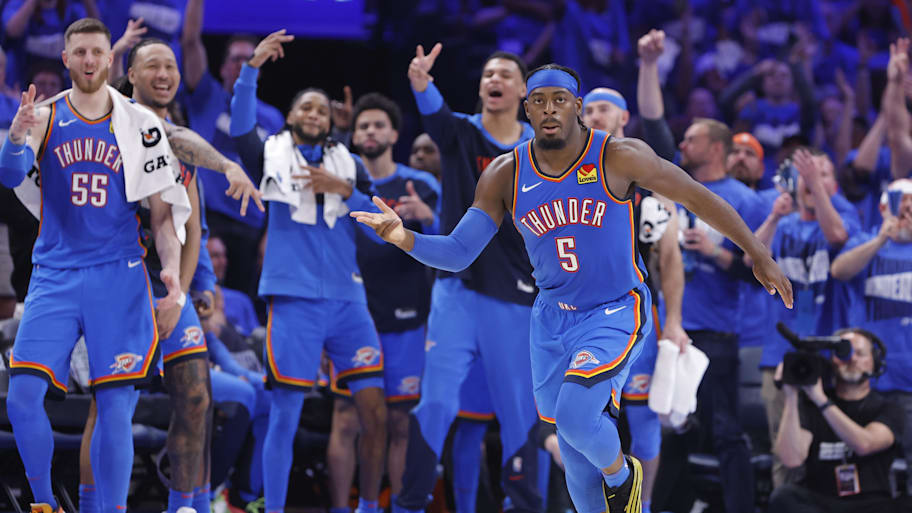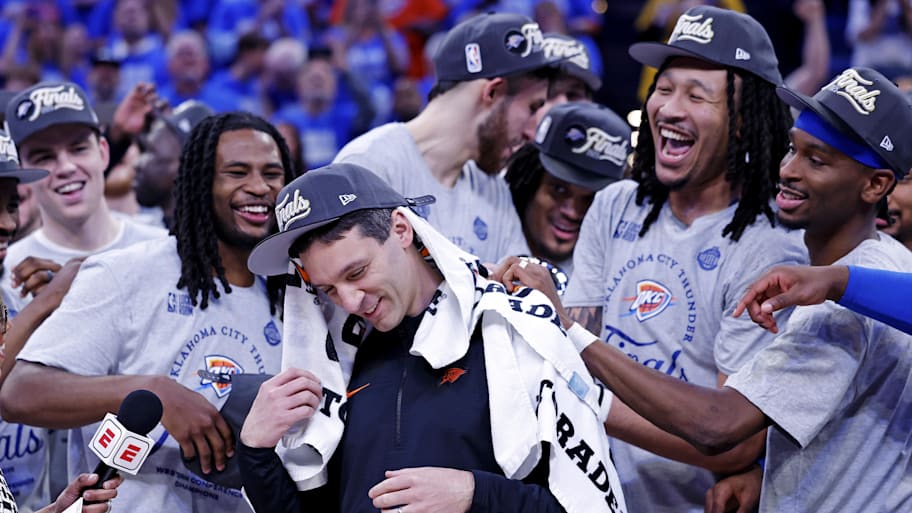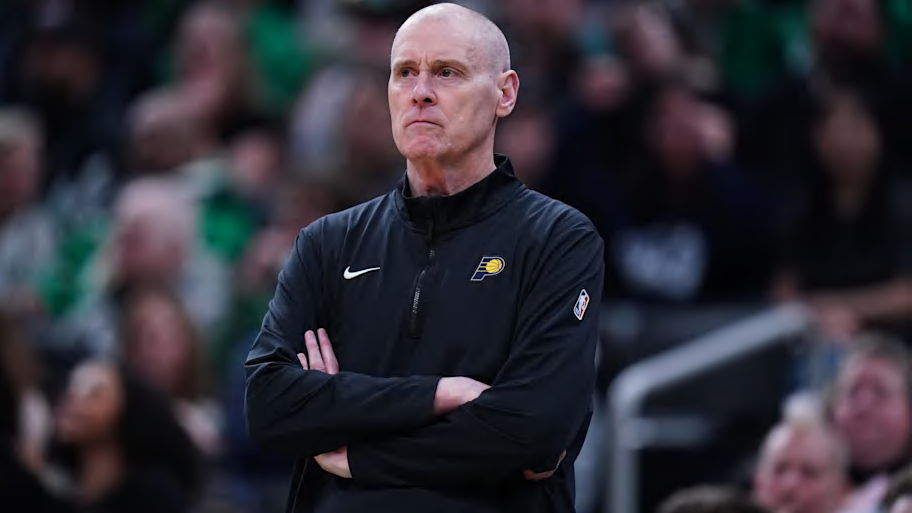Last week, as the Indiana Pacers celebrated their series-clinching win over the New York Knicks, NBA fans took to social media to offer smirking assessments of an Indiana–Oklahoma City NBA Finals. Among them: David Stern would hate this. Stern, the New York–born ex-NBA commissioner, who once (allegedly) steered Patrick Ewing to the Knicks, who once (actually) declared his preferred Finals matchup to be “Lakers vs. Lakers,” would have cringed at a matchup between two of the league’s smallest markets, or so the commentary went. “Total bulls---,” says a longtime team exec. “David would have loved this.”
Indeed, as the NBA prepares to crown a new champion for the seventh consecutive season, it’s worth noting it was Stern who got this ball rolling. In 2011, Stern, determined to whittle down players’ share of basketball-related income and put in place a more constraining salary cap, locked the players out, forcing a 161-day work stoppage. The NBA, Stern said, needed a structure that “30 teams, if well managed, have an opportunity both to compete and to make a profit.” The league lost 16 games off the ’11–12 season. It gained a collective bargaining agreement that put it on a path to parity.
In a way, these Finals are Stern’s crowning achievement. Indiana (the NBA’s ninth-smallest media market) has never won an NBA championship. The Thunder’s roots trace back to Seattle, where they won the 1979 title. In Oklahoma City (third-smallest media market), the team has never won.
One will claim the Larry O’Brien Trophy, for the exact reasons Stern envisioned. They are well-run, well-managed franchises who built championship-level rosters through smart drafting, shrewd trades and timely free agent signings. After 14 years, two more CBAs, a commissioner change (Adam Silver, Stern’s longtime deputy commissioner, succeeded Stern in 2014) and a cap spike, the NBA has created a landscape where half the teams in the playoff field believe they can win a championship. And the other half think they are a piece or two away from joining them.

“I understand that dynasties are something that fans will get behind,” Silver said last year. “At the same time what you hear from fans is they want those teams to be created the right way. So people aren’t that interested in seeing teams buy championships, so to speak.”
For the NBA, the dream has been realized. Parity has been achieved. It’s the era of merit-based success, with the two Finals teams offering blueprints for how to achieve it.
In the spring of 2019, Oklahoma City officials geared up for an aggressive offseason. The ’18–19 season had been a disappointment, ending in a humiliating first-round loss to the Portland Trail Blazers. Still, the Thunder believed the core of the team, headlined by Russell Westbrook and Paul George, had one more run in them, and the Sam Presti–led front office was determined to add pieces that could help them do it.
Then, on the eve of free agency, George requested to be traded.
Instead of retooling, Oklahoma City was forced to rebuild. George went first, shipped to the Los Angeles Clippers for one of the largest packages of players and picks in NBA history. Three unprotected first-round picks from the Clippers. Two more, via the Miami Heat. A pair of pick swaps. And a young, 20-year-old guard named Shai Gilgeous-Alexander.
Westbrook was next. The Houston Rockets, eager for a new backcourt mate for James Harden, shipped Chris Paul, two first-round picks and two swaps to Oklahoma City for Westbrook. Totaled, the haul was historic: Seven first-round picks and four swaps.
Thunder brass celebrated. But they knew what was coming. Auctioning off stars was easy. Now Oklahoma City would have to play without them. They staved off disaster in the first year, racking up 44 wins in the COVID-19–shortened 2019–20 season, with Paul, Gilgeous-Alexander and Dennis Schroder leading the way. That summer, the Thunder flipped Paul to the Phoenix Suns, collecting another first-round pick. That’s when the bottom fell out.
Oklahoma City won 22 games in the 2020–21 season. The Thunder won 24 the next season. The losing streaks were demoralizing. A 14-game skid in ’20–21. A nine-game winless stretch right after. In ’21–22, they had losing streaks of seven, eight and 10.
Those years, though, offered opportunity. “It was a blank piece of paper,” Mark Daigneault said. A Thunder assistant under Billy Donovan, Daigneault was promoted to head coach after Donovan left in 2020. While Presti used the early years to identify players, Daigneault used them to build out a system. “How we were going to play on both ends of the floor,” Daigneault said. “The fundamentals, refining that over time, building our mettle through the adversities of losing more games than we win by a large margin.”
Losing was difficult. “Humbling,” Gilgeous-Alexander said. Still, like Daigneault, Gilgeous-Alexander saw the advantages of playing in a pressure-free environment. “Those days were very important,” Gilgeous-Alexander said. “Building habits, building the things you don’t really see every night, things that don’t really show up in the stat sheet. Coach has always been really good on his standard of how we play and the things that matter, no matter who’s on the team, no matter what our record is.”
For Lu Dort, each loss was motivation. Dort was signed as an undrafted free agent in 2019, eventually working his way into Oklahoma City’s rotation. “It was not fun to go out there and lose by 20,” Dort said. Each loss, Dort added, was memory-holed as an experience he never wanted again. “It was more fuel and motivation,” Dort said. “And honestly knowing that this is not where we want to be in the league. We want to try our best to win the most games that we can win.”

In the front office, Presti looked for players to help them do it. In 2012, Oklahoma City’s trip to the Finals was powered by singular talents. Kevin Durant’s dynamic scoring. Westbrook’s explosiveness. Harden’s polished playmaking. As Presti built out the new Thunder, versatility was coveted. Some of Presti’s swings hit (Josh Giddey, Jalen Williams). Others missed (Darius Bazley, Aleksej Pokusevski).
“The beauty of Sam is that Sam has this biological clock in his brain when he knows when you have to move on from somebody,” says Bobby Marks, an ESPN analyst and former assistant general manager with the Brooklyn Nets. And, Marks adds, they don’t panic when things don’t work out. “They don’t operate like that, man,” Marks says. “They don’t have these blinders on. They kind of know who fits with this group.”
Internally, the Thunder began to note improvements, “flickers,” said Daigneault, of what was to come. Trades were strategic. In 2020, Oklahoma City acquired Al Horford, in part to collect another first-round pick, but in part to see how Gilgeous-Alexander played alongside a floor-spacing big. The losses continued to pile up, but they began to get more competitive.
“There was a competitive spirit that the team had where they were competing independent of the outcomes of the games,” Daigneault said. “Which I thought was very encouraging. And we were doing that on a pretty consistent basis. I think if you’re a hardcore Thunder fan, you were following those teams. Those teams on a lot of nights were punching above their weight, and I thought showed some signs of feistiness and competitiveness that have certainly flowered as time’s gone on.”
In 2022–23, Oklahoma City won 40 games. In ’23–24, it jumped to 57. Gilgeous-Alexander blossomed from promising guard to MVP candidate. Chet Holmgren emerged as a dynamic frontcourt partner. Williams showed flashes of becoming a reliable third scorer. The versatility of its roster, said Daigneault, accelerated its development.
“Having the versatility on the roster allows us to bend and adapt to the opponent, bend and adapt to our circumstances with injuries or roster,” Daigneault said. “And it also allows us to develop players because you can get a lot of guys out there and you’re not having to fit puzzle pieces into a very narrow thing.”

Last spring, Oklahoma City was bounced in the second round by the Dallas Mavericks. Some flaws—rebounding, wing depth—were exposed. Once again, Presti set out to reinforce a potential contender. This time there would be no trade request to stop it. Isaiah Hartenstein was added to reinforce the frontcourt. Presti flipped Giddey for Alex Caruso, trading offense for more defense. The results were a 68-win season, the NBA’s top defense and the largest per game margin of victory (12.9 points) in league history.
In the playoffs, Oklahoma City was tested. Down 2–1 to the Denver Nuggets, the Thunder rallied to win Game 4. In Game 7, they blew out a Nuggets team two years removed from a championship. Oklahoma City lost by 42 in Game 3 of the conference finals against Minnesota. They bounced back to win a nip-and-tuck Game 4 on the road. Questions about the Thunder’s readiness have quickly dissipated.
“You never know how many times you get to play for a team like this,” Gilgeous-Alexander said. “Especially when basketball becomes a business and you’re not just a kid running around. So yeah, it’s special and you try to cherish these moments no matter what’s going on, wins or losses or you try to just embrace the journey and embrace the opportunity.”
Rick Carlisle has a story. In February 2022, after Indiana acquired Tyrese Haliburton from the Sacramento Kings, Carlisle took Haliburton to dinner. Carlisle knew the significance of the trade. To get Haliburton, the Pacers had to give up Domantas Sabonis, a budding big man with All-Star potential. For Indiana to win, Haliburton, a second-year guard, had to fit.
At dinner, Carlisle’s message was simple: This is your team now. “I had a short conversation with him to tell him that we were basically giving him the ball,” Carlisle said. “I asked him if he was comfortable running the team, making play calls whenever we needed to make play calls and all those kinds of things. And his eyes lit up. He was really enthusiastic about that.”
For Haliburton, the conversation offered relief. The trade was devastating. Haliburton had a successful first year in Sacramento, finishing third in the Rookie of the Year vote. He started his second season started even better, bumping up his scoring and assist totals while shooting better than 40% from three. The Kings were immersed in a decades-long stretch of futility. Haliburton wanted to be part of the group that turned it around.

What Haliburton wanted was to be part of building something. In Indiana, he became the centerpiece of it. With Haliburton on board, the Pacers set out to find players who complemented him. Haliburton is a unique talent. He won’t beat you in the post. He’s a good isolation player, but not a great one. What he is: a three-point shooting, flashy playmaking, open floor blur. Said Carlisle, “As we’ve put this group together around Tyrese, we’ve had to make adjustments to develop a style that was effective for us.”
Movement was prioritized. Indiana was 17th in pace in the 2021–22 season. The next year, Haliburton’s first full season, they were fourth. In the playoffs, the Pacers crushed opponents in transition, often creating breaks off made baskets. Since 1990, only two teams have made the Finals playing faster than Indiana. The ’16–17 Warriors were one. The ’24–25 Thunder are the other.
It isn’t just transition. In the half court, Indiana’s offense is in constant motion. The ball never stops moving. The Pacers averaged 330.5 passes per game in the regular season, per NBA.com, second-most in the NBA. They ranked in the top-five in assists, secondary assists and assist points created. They did it while ranking in the bottom five in turnovers per game.
To play that way, Indiana needed the right personnel. It had some in place. Myles Turner, a fluid, three-point shooting big man, fit seamlessly. T.J. McConnell, a feisty defender who fit Carlisle’s pressing style. They drafted Andrew Nembhard, Bennedict Mathurin and Ben Sheppard. They traded for Aaron Nesmith and Obi Toppin, seldom-used players in Boston and New York, respectively, who have thrived in Indiana.
In 2024, Indiana faced a decision. The Pacers were good, hovering in the top-six in the Eastern Conference, in position to make the playoffs for the first time since ’20. But they were missing something. A reliable perimeter scorer. Defensive versatility. When Toronto made Pascal Siakam available, the Pacers pounced, dealing away three first-round picks for the Raptors forward.
The trade paid immediate dividends. Siakam averaged 21.3 points in 41 games that first season, shooting 38.6% from three, helping the Pacers advance to the conference finals. He was “a big brother,” said Haliburton. Siakam played 78 games this season, averaging 20.2 points and earning his third All-Star berth. His performance in the conference finals (24.8 points, five rebounds) earned him conference finals MVP.

“The Siakam trade, oh my God,” Marks says. “What a difference-maker. That completed them. A team told me last year, and this was a year ago and it probably still holds true, they’re kind of the prototypical team. If there’s the gold standard on how to build a roster under these rules, it’s them. When you have two max guys and then you have everyone else under $20 million.”
With Haliburton leading it. If there’s been a breakout star in these playoffs, it’s been Haliburton, who has led historic comebacks, knocked down impossible shots and been the engine to Indiana’s first Finals appearance since 2000. After the final buzzer sounded in Game 6 against New York, Haliburton and Siakam shared a long embrace.
“When we brought him here, we envisioned doing something like this, doing something special,” Haliburton said. “This is a franchise that took a chance on me. Saw something that other people didn’t see in me. Sometimes I think they saw more in me than I saw in myself. I love being a Pacer. There’s nothing like it.”
Hanging over the Finals is a question: Will anybody watch? The push for parity has effectively zeroed out big-market superteams, creating opportunities for smaller markets to compete. Smaller markets, though, often mean smaller ratings. Neither Oklahoma City nor Indiana are in a top-20 media market, the first time ever the Finals has featured two teams outside the top 20.
Privately, NBA officials will acknowledge a likely ratings dip. The Western Conference finals averaged 5.6 million viewers, down 17% from the Wolves-Mavericks series a year earlier. The Game 5 clincher was the least-watched Game 5 in nearly two decades. Star power historically has helped boost ratings. LeBron James did it for years in Cleveland and Miami. The Thunder and Pacers have stars (Gilgeous-Alexander is the reigning MVP), but they have not yet broken through to a broader audience.
The NBA insists it’s fine with it. There is no pressure on the league to deliver high ratings. Last summer, the league signed rights deals with ESPN/ABC, NBC and Amazon that will generate $75 billion over the next 11 seasons. Stars like Gilgeous-Alexander and Haliburton (not to mention Williams, Holmgren, Turner and Siakam) will benefit from Finals eyeballs. Long term, the NBA believes NFL-level parity will lead to broad growth in ratings.
Critics will argue that the NBA needs dynasties. The league experienced its greatest growth in the ’80s, when the Celtics and Lakers were squaring off, and the ’90s, during the rise of the Bulls. Long-term growth, however, required more than just a handful of teams winning championships. Stern believed it. The Finals are his legacy, one shepherded expertly by Silver, that both believe will lead to a brighter future.
More NBA Finals on Sports Illustrated
This article was originally published on www.si.com as How Small-Market Thunder and Pacers Brought Parity to the NBA Finals.
